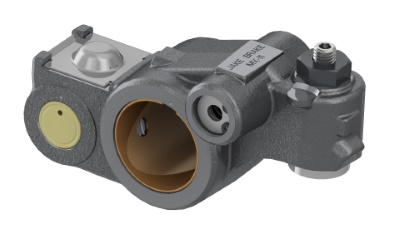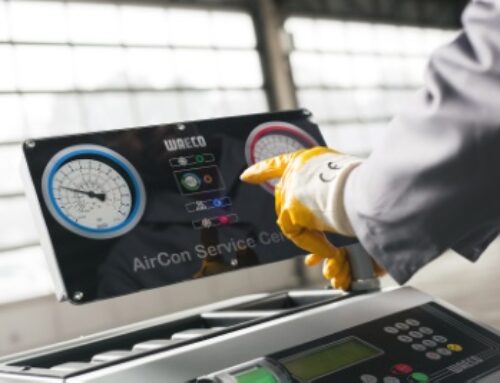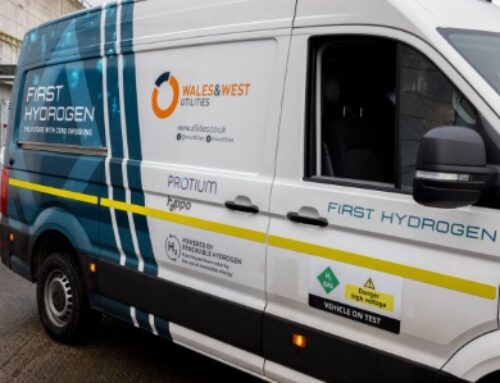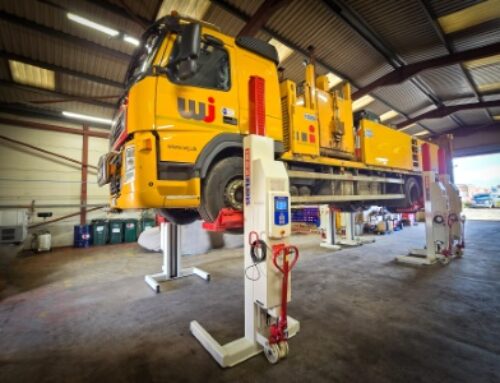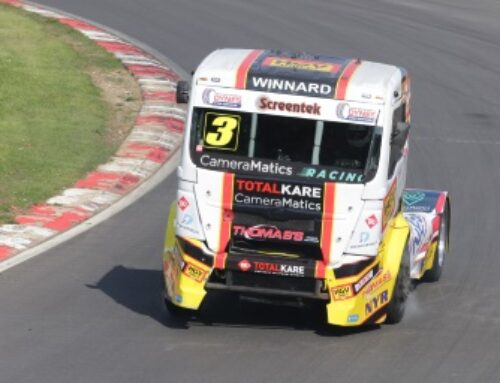Primary considerations for secondary brakes
Gabe Roberts of Jacobs Vehicle Systems explains how engine brake technology can help meet forthcoming requirements on particulate emissions
The proposed Euro 7/VII emissions regulations will, for the first time, seek to measure and regulate vehicle particulates produced from sources other than the exhaust system: most notably brakes and tyres.
Vehicle manufacturers are therefore going to increasingly focus on braking technologies that do not involve abrading friction materials. There are two current technologies that will enable this: transmission retarders and engine brakes.
Transmission retarders work by flooding a chamber adjacent to the main gearbox with oil. Inside the chamber are two vaned turbine wheels. One is rotated by the output side of the gearbox (the rotor), and the other is fixed (the stator). As the chamber is flooded with oil, the rotor throws the fluid against the stator. The pumping and churning losses generated create drag on the transmission and slow the vehicle via the driving wheels.
They also create heat, and if the retarder is to have effective endurance, then a dedicated cooling system must be installed. Even then, braking performance can become inconsistent as the driveline temperature rises. When not in use, the retarder is likely to generate parasitic drag, reducing fuel economy.
Retarders can weigh 80 kg or more, and are at their most effective at road speeds of 50 km/h or over, where they can generate significant retardation.
On the other hand, we have the engine brake. The most common is a compression release engine brake that releases pressure from the cylinders as each piston nears the top of the compression stroke. This reduces the air that would otherwise be held in the cylinder from forcing the piston down on the expansion stroke, creating a negative net torque on the crankshaft.
Braking forces generated by the engine brake are determined by the engine, rather than road speed, and remain consistent over a wide range of driveline operating temperatures: meaning that, compared to a transmission retarder, the system is of more use, more of the time.
Where a manual control is specified for the Jake Brake, the driver can select one of three modes of braking force, low, medium and high, where the retardation from each mode increases with engine speed. Depending upon the truck specification, the activation control for the Jake Brake can be integrated into the truck’s main braking system, being typically actuated ahead of the friction brakes when the brake pedal is depressed.
The performance of the engine brake is tied to the RPM of the engine, not the prop shaft speed like the driveline retarder. This allows the retarding performance to be maintained as the vehicle speed is reduced. The transmission will select a lower gear that keeps the engine RPM at an optimal engine brake speed. Because the transmission retarder is tied to the prop shaft, the performance will drop off as the vehicle speed is reduced.
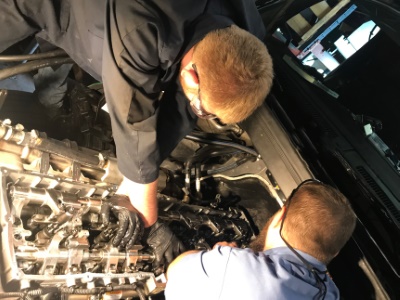
Jacobs Vehicle Systems engineers working on the company’s High Power Density (HPD) engine brake system
In an effort to continuously improve retarding performance, Jacobs has developed a new High Power Density (HPD) engine brake system that combines traditional compression release technology with cylinder deactivation technology to achieve up to two times the engine braking performance throughout the RPM range. HPD technology has seen an increase in interest after the EU7 regulation release as OEMs look to reduce foundation brake usage to meet the new particulate levels.
The standard compression release Jake Brake has no impact on fuel consumption, and it adds just 15 kg to the vehicle’s unladen weight. Typically, when installed on an 11-litre, six-cylinder diesel, it will generate a maximum braking effort of 340 kW, rising to 360 kW on a 13-litre six-cylinder engine. With HPD this retarding performance further increased up to over 500 kW.
While most European truck manufacturers offer Jake Brakes at least as optional equipment, the approach to Euro VII is likely to see the majority standardising this equipment as a line-fit – and the environment benefiting from a reduction in brake-related particulate emissions while operators enjoy reduced friction braking system maintenance costs, and the self-evident improvements in road safety from the extra, and consistent, braking power.


